Manufacture and installation of large acrylic cylinder - LEYU
Large Acrylic cylinder aquariums are typically made by bonding together flat sheets of acrylic using a special solvent called methyl methacrylate (PMMA)
The manufacture and installation of large acrylic cylinders involve several key processes and considerations. Here is a detailed introduction:
Manufacture
1. Material Selection
- High-Quality Acrylic Sheets:
Choose acrylic sheets with high transparency, good impact resistance and excellent weather resistance. The thickness of the sheets should be determined according to the size and use of the cylinder. Usually, for large acrylic cylinders, sheets with a thickness of 10-50 mm may be selected.
- Auxiliary Materials:
Prepare necessary auxiliary materials such as adhesives, polishing agents and protective films. The adhesive should have strong bonding force and good transparency to ensure the strength and aesthetics of the cylinder.
2. Cutting and Shaping
- Cutting the Sheets: Use a CNC cutting machine or a laser cutting machine to cut the acrylic sheets into the required size and shape according to the design drawings. The cutting accuracy should be controlled within a certain range to ensure that the sheets can be accurately assembled.
- Forming the Cylinder: There are two common methods for forming the cylinder. One is the thermal bending method, where the acrylic sheets are heated to a certain temperature and then bent into a cylindrical shape using a mold. The other is the splicing method, where several cut acrylic sheets are spliced together to form a cylinder.
3. Surface Treatment
- Polishing:
After cutting and shaping, polish the surface of the acrylic cylinder to remove cutting marks and improve surface smoothness and transparency. Polishing can be done by mechanical polishing or chemical polishing.
- Edge Treatment:
Deburr and chamfer the edges of the acrylic cylinder to prevent scratches and improve safety.
4. Assembly and Bonding
- Assembly:
If the cylinder is formed by splicing, accurately assemble each part according to the design requirements and fix them temporarily with clamps or other tools.
- Bonding:
Use a suitable adhesive to bond the assembled parts. During the bonding process, ensure that the adhesive is evenly applied and there are no air bubbles or gaps. After bonding, let it stand for a certain period of time to allow the adhesive to cure completely.
5. Quality Inspection
- Visual Inspection:
Check the appearance of the acrylic cylinder for cracks, bubbles, scratches and other defects. The transparency and color uniformity of the cylinder should also be inspected.
- Dimensional Inspection:
Measure the diameter, height and wall thickness of the acrylic cylinder to ensure that they meet the design requirements. The dimensional tolerance should be controlled within the specified range.
- Strength Test:
Perform a strength test on the acrylic cylinder as needed to ensure that it can withstand the required pressure and load.
Installation
1. Preparation before Installation
- Site Cleaning:
Clean the installation site to remove debris, dust and other impurities to ensure a clean and flat surface.
- Check the Cylinder:
Recheck the acrylic cylinder for any damage or defects during transportation.
- Prepare Tools and Equipment:
Prepare necessary tools and equipment such as cranes, forklifts, wrenches and sealants.
2. Lifting and Placement
- Lifting:
Use a crane or other lifting equipment to lift the acrylic cylinder and move it to the installation position. During the lifting process, ensure that the cylinder is balanced and stable to avoid collision and damage.
- Placement:
Gently place the acrylic cylinder on the pre-prepared base or support. Adjust the position and level of the cylinder to ensure that it is installed vertically and horizontally.
3. Fixing and Sealing
- Fixing:
Fix the acrylic cylinder to the base or support with bolts, nuts or other fixing devices. The fixing should be firm to prevent the cylinder from shaking or moving.
- Sealing:
Seal the joints and connections of the acrylic cylinder with sealant to prevent leakage and ensure the tightness of the cylinder.
4. Connection and Installation of Accessories
- Connection of Pipes and Fittings:
Connect the pipes and fittings on the acrylic cylinder according to the design requirements. Ensure that the connections are tight and leak-free.
- Installation of Accessories:
Install accessories such as valves, gauges and lighting equipment on the acrylic cylinder. The installation should be carried out in accordance with the instructions and standards.
5. Final Inspection and Testing
- Inspection:
Conduct a comprehensive inspection of the installed acrylic cylinder, including the installation position, fixing situation, sealing performance and connection of accessories.
- Testing:
Perform a leak test, pressure test and other necessary tests on the acrylic cylinder to ensure that it can operate normally.
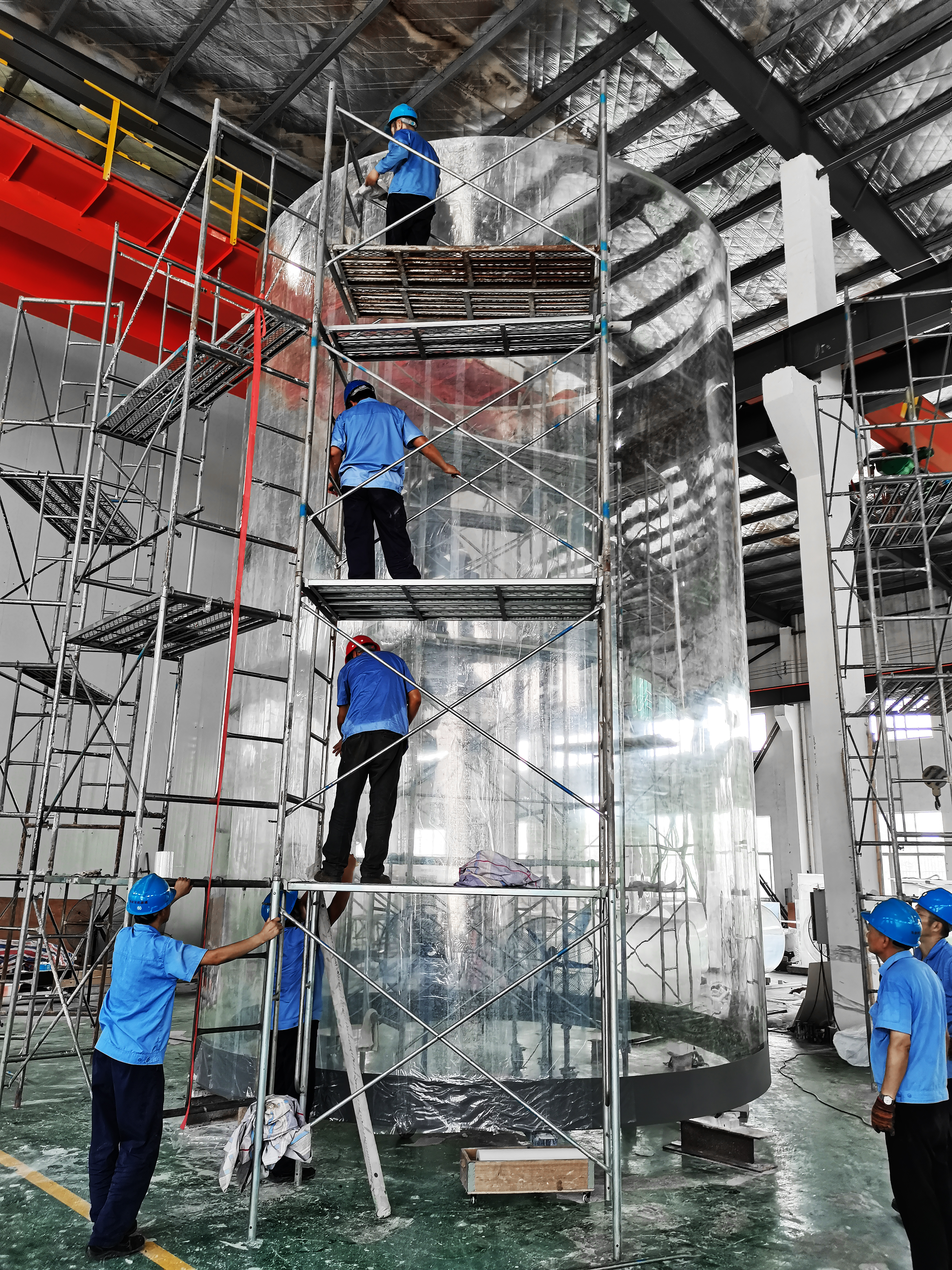
Acrylic cylinder aquarium
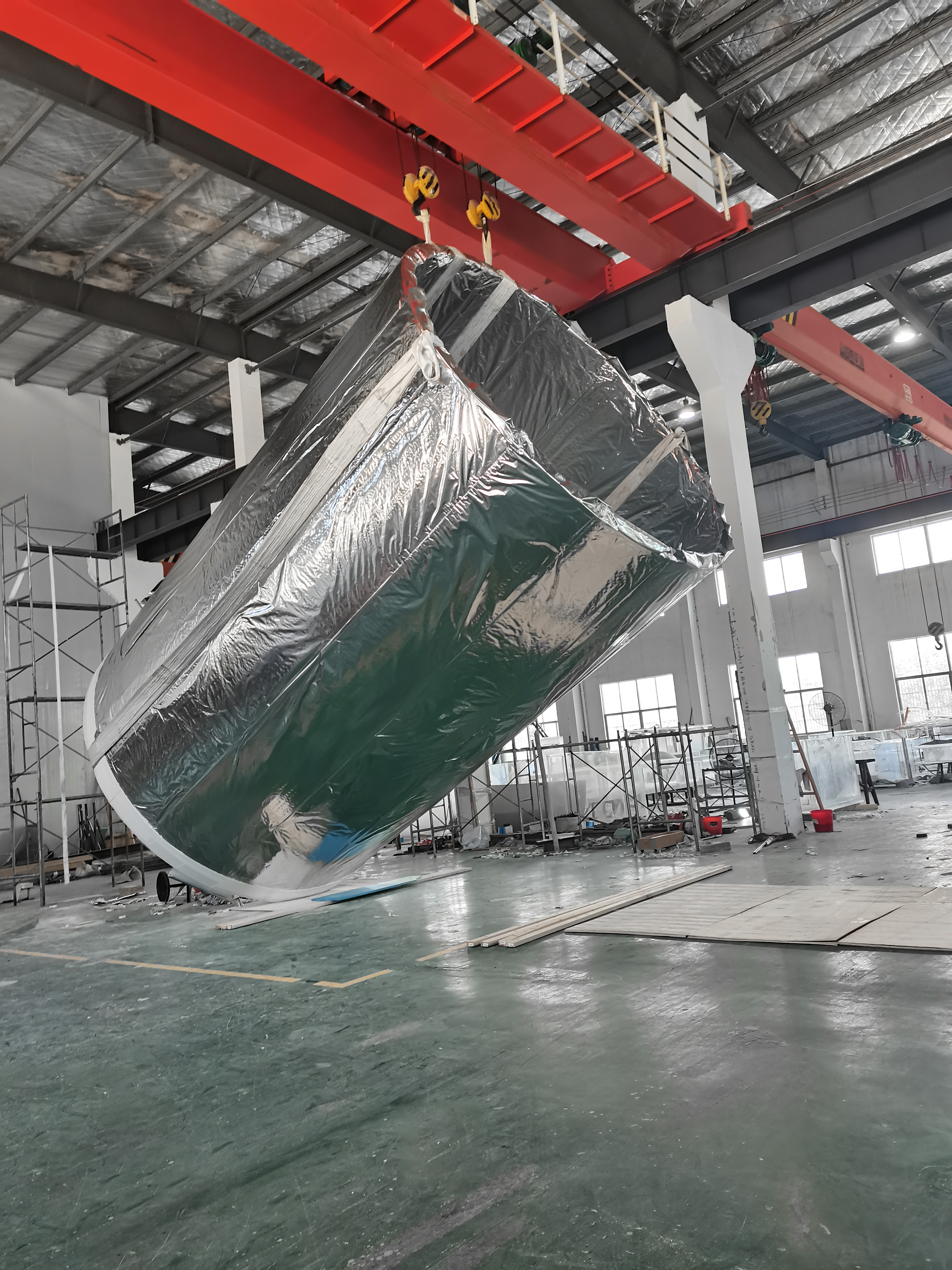
Acrylic cylinder aquarium

Acrylic cylinder aquarium
Leyu Acrylic cylinder aquariums -Specializing in Manufacture and installation of large acrylic cylinder
Leyu is a professional factory specializing in the manufacturing of acrylic panels and aquatic products
Leyu is a company that produces a variety of acrylic cylinder aquariums for both commercial and residential use. They offer a range of sizes and shapes, from small desktop aquariums to large cylindrical tanks.
Leyu's aquariums are made from high-quality acrylic, which is known for its clarity and durability. The acrylic used in Leyu's aquariums is also resistant to impact, making it less likely to crack or break than glass.
In addition to standard cylinder shapes, Leyu also offers custom aquarium designs, including aquariums with curved fronts or other unique features. They also offer a range of accessories, such as filtration systems, lighting, and stands.
Leyu's aquariums are designed to provide a clear and unobstructed view of the fish and other aquatic creatures inside. They are also easy to maintain and clean, with removable lids and easy-access filtration systems.
Overall, Leyu's acrylic cylinder aquariums are a popular choice among aquarium enthusiasts and professionals alike, offering a combination of durability, clarity, and customizability.
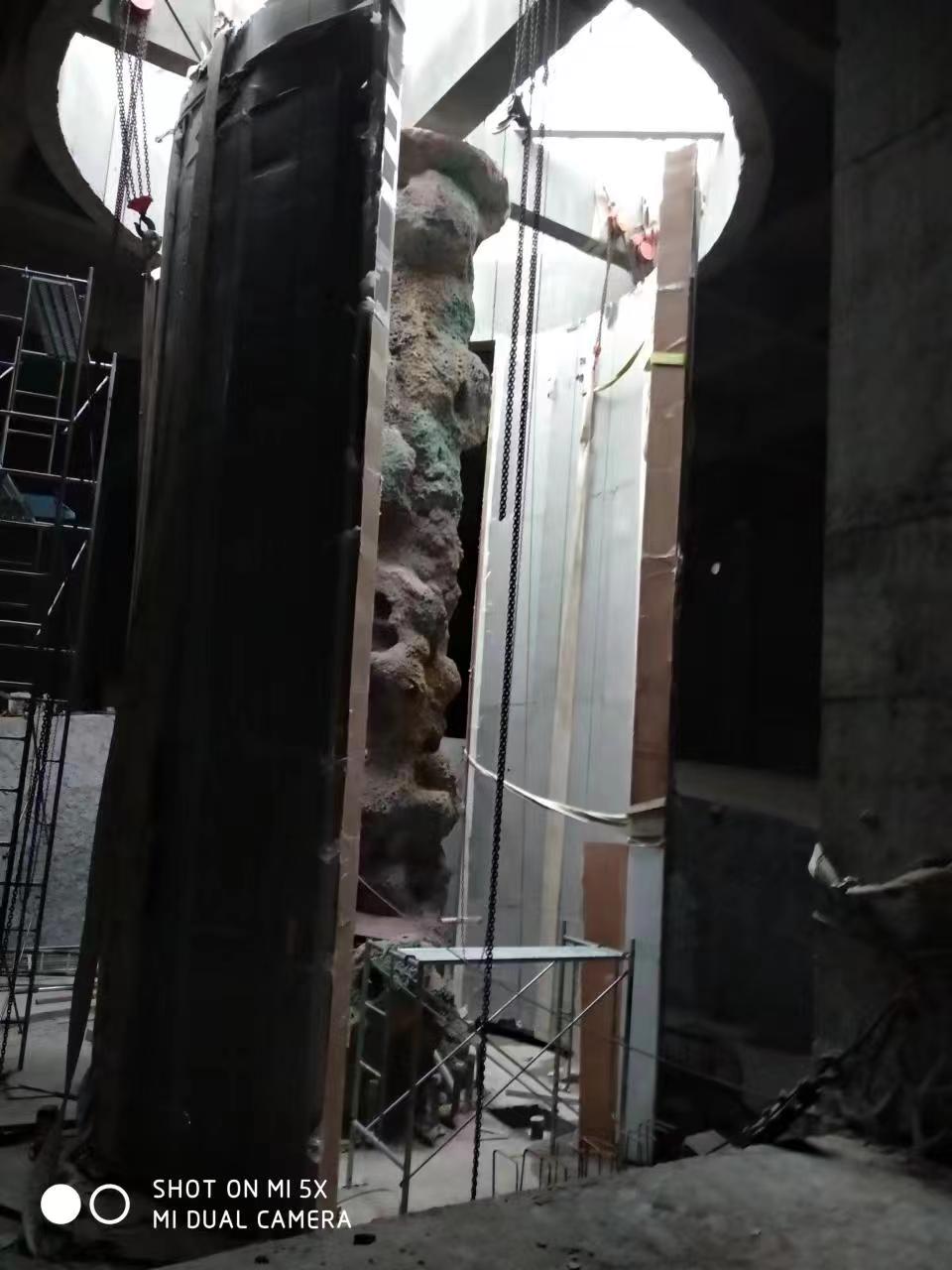
What are the processes required for the production of acrylic cylinder
Aquarium fish tanks?
The production of an acrylic cylinder aquarium typically involves several processes.
Here are the main steps involved:
Design and Planning:
- Determine the desired dimensions, specifications, and requirements for the acrylic cylinder.
- Create a detailed design or blueprint that includes the dimensions, thickness, and any additional features or components.
Material Selection:
- Choose the appropriate acrylic material for the cylinder based on factors such as transparency, durability, and chemical resistance.
- Acrylic sheets or tubes are commonly used for producing cylinders.
Cutting and Shaping:
- Cut the acrylic material into the required size and shape using specialized cutting tools, such as saws or laser cutters.
- For cylindrical shapes, the acrylic material may be cut into circular discs or tubes.
Joining:
- If using acrylic tubes, the next step is to join them together to create the cylindrical shape.
- Various methods can be used for joining, such as solvent cementing, adhesive bonding, or heat welding.
- Solvent cementing is a common method where a solvent is applied to the edges of the acrylic pieces, causing them to soften and fuse together.
Machining and Finishing:
- Once the cylindrical shape is formed, it may require additional machining or finishing processes.
- This can include drilling holes, polishing the surface, or adding any necessary fittings or components.
Quality Control:
- Inspect the finished acrylic cylinder for any defects, such as cracks, scratches, or imperfections.
- Ensure that the dimensions and specifications meet the required standards.
- Conduct any necessary tests to verify the strength, durability, and transparency of the acrylic cylinder.
Packaging and Shipping:
- Properly package the acrylic cylinder to protect it during transportation.
- Use appropriate packaging materials to prevent scratches or damage.
- Arrange for shipping or delivery to the desired location.
It is important to note that the specific processes and techniques may vary depending on the manufacturer, equipment used, and the complexity of the acrylic cylinder design. Consulting with an experienced acrylic fabrication company or professional is recommended for precise guidance and execution of the production process.

Acrylic cylindrical aquarium
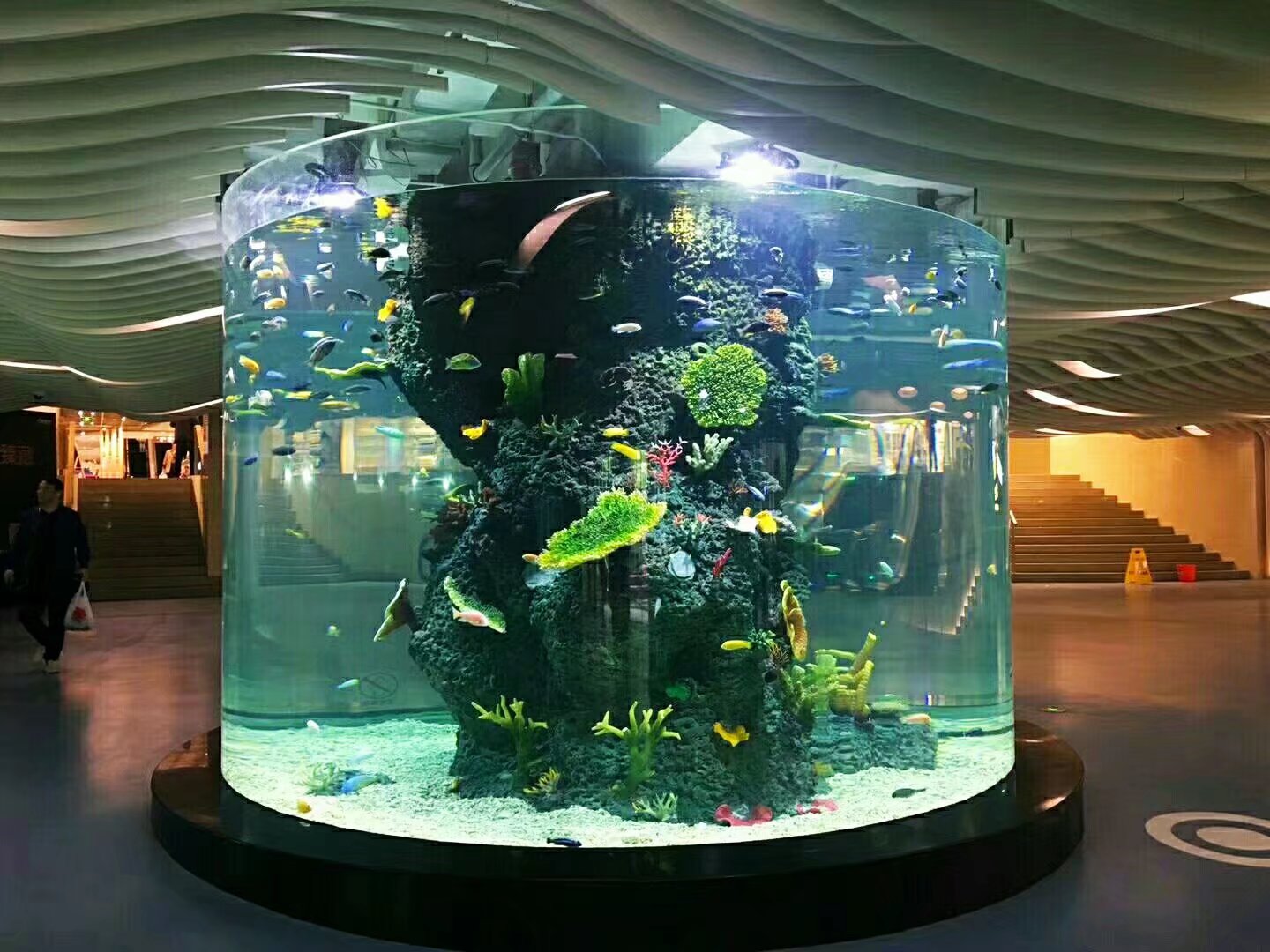
Acrylic cylindrical aquarium
The difference between acrylic cylinder aquarium and glass cylinder - Manufacture and installation of large cylinder aquariums
Acrylic and glass cylinder aquariums have several differences. Acrylic aquariums are made of a type of plastic, while glass aquariums are made of glass
Here are some of the differences between the two:
Strength and Durability:
Acrylic aquariums are generally stronger and more durable than glass aquariums. Acrylic is a type of plastic that is more impact-resistant than glass, which means it is less likely to crack or break.
Weight:
Acrylic aquariums are lighter than glass aquariums. This can make them easier to move and transport.
Clarity:
Glass aquariums have better clarity than acrylic aquariums. Acrylic tends to scratch more easily than glass, which can affect the clarity of the tank over time.
Cost:
Acrylic aquariums are generally more expensive than glass aquariums. However, they may be a better long-term investment due to their durability.
Shape and Size:
Acrylic aquariums can be molded into different shapes and sizes, while glass aquariums are limited to rectangular or square shapes.
Overall, the choice between an acrylic or glass cylinder aquarium will depend on your personal preferences and needs. If you are looking for a tank that is strong and durable, an acrylic aquarium may be the better choice. If clarity is a top priority for you, a glass aquarium may be a better option.

Leyu acrylic aquarium
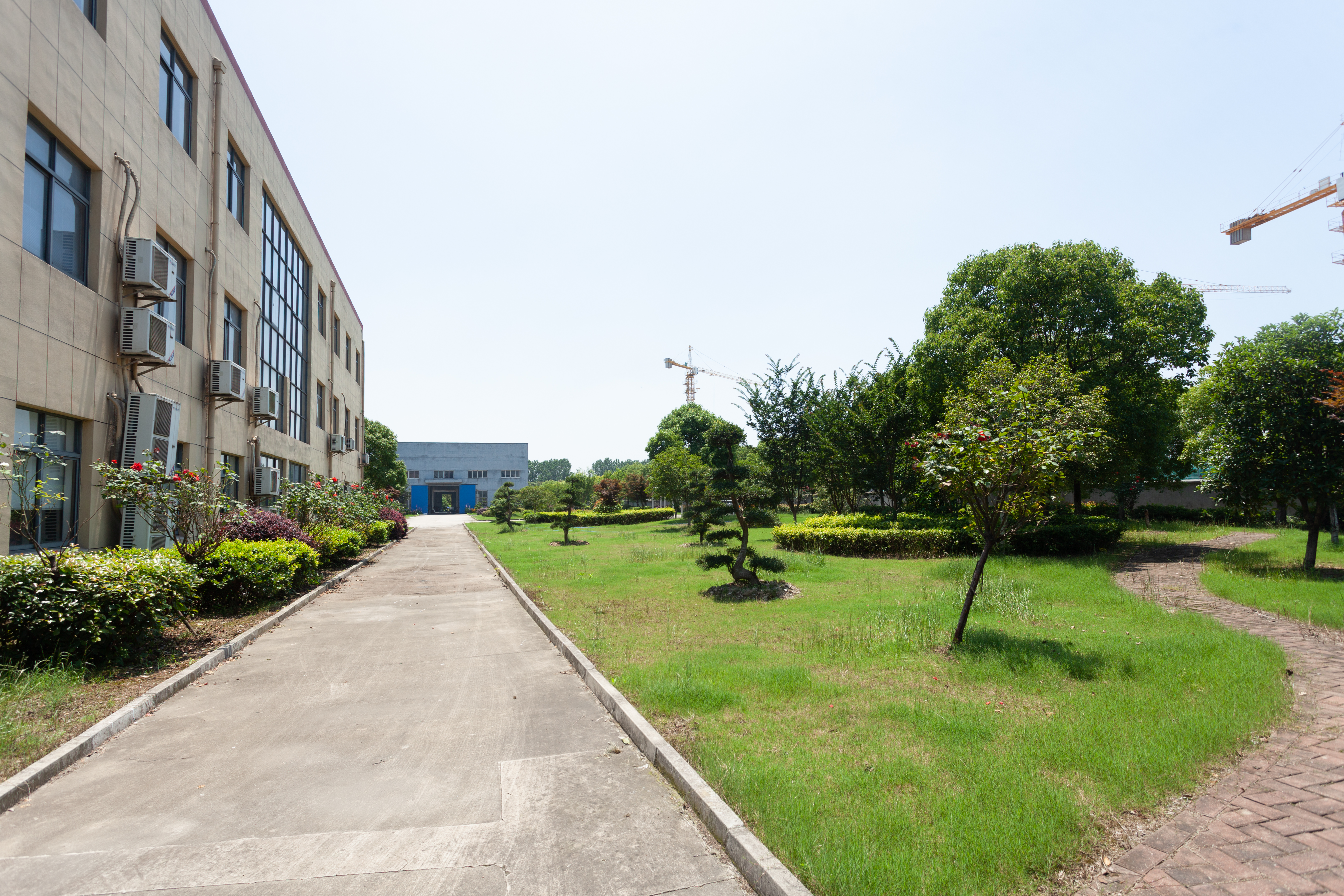
Leyu acrylic aquarium
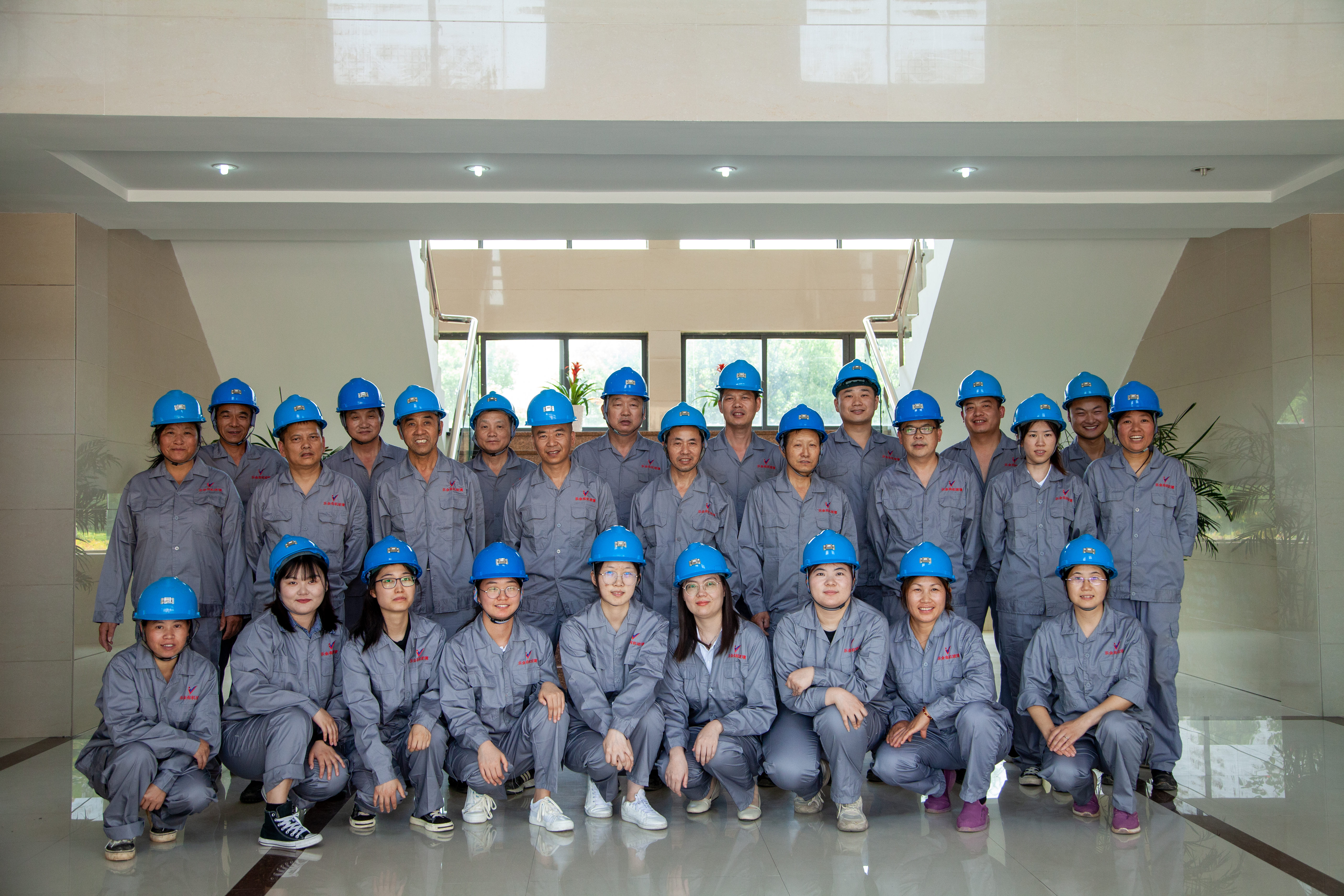
Leyu acrylic aquarium
Other related searches
Small acrylic aquarium design
aquarium tank
Acrylic aquarium design ideas
Aquarium specialist
Metal aquarium cabinet
Stainless steel aquarium stand
Small acrylic aquarium design
Acrylic aquarium design ideas
Aquarium
Fish aquarium
Glass aquarium
Cylinder acrylic aquarium
Boyu aquarium
Jebo aquarium
Marine aquarium
Round acrylic aquarium
Large acrylic aquarium
English
العربية
Русский
Español
Português
Français
Deutsch
italiano
한국어
Nederlands
Tiếng Việt
ไทย
Polski
Türkçe
አማርኛ
ភាសាខ្មែរ
Bahasa Melayu
தமிழ்
Filipino
Bahasa Indonesia
magyar
Română
Čeština
Српски
हिन्दी
فارسی
Kiswahili
Slovenčina
Slovenščina
Norsk
Svenska
Ελληνικά
Suomi
עברית
Dansk
Shqip
বাংলা
Hrvatski
Afrikaans
Māori
සිංහල
Беларуская мова
Bosanski
ދިވެހި
Esperanto
guarani
Hausa
ʻŌlelo Hawaiʻi
Kurdî
Lietuvių
Македонски
ਪੰਜਾਬੀ
Runasimi
Türkmençe
isiZulu


 +86-13584439533
+86-13584439533 













































